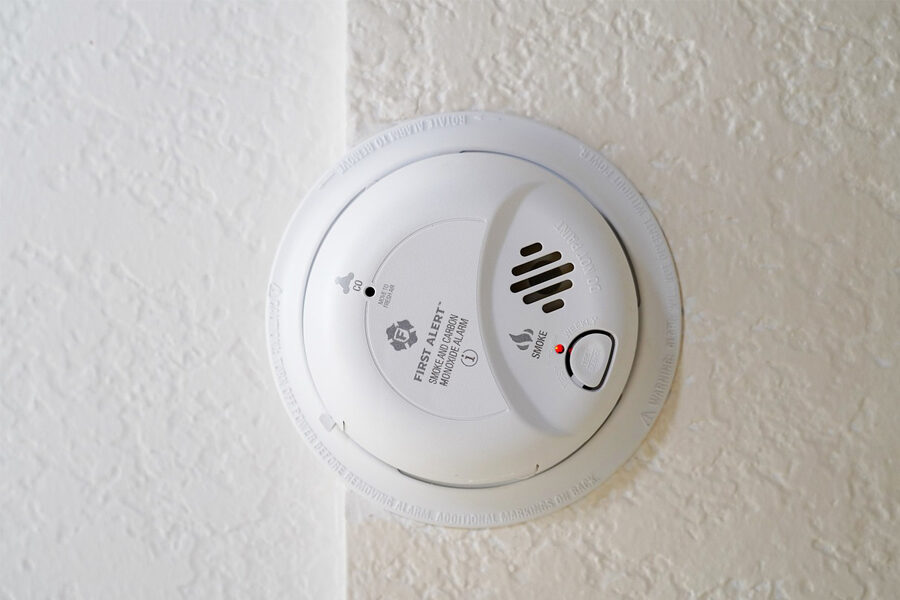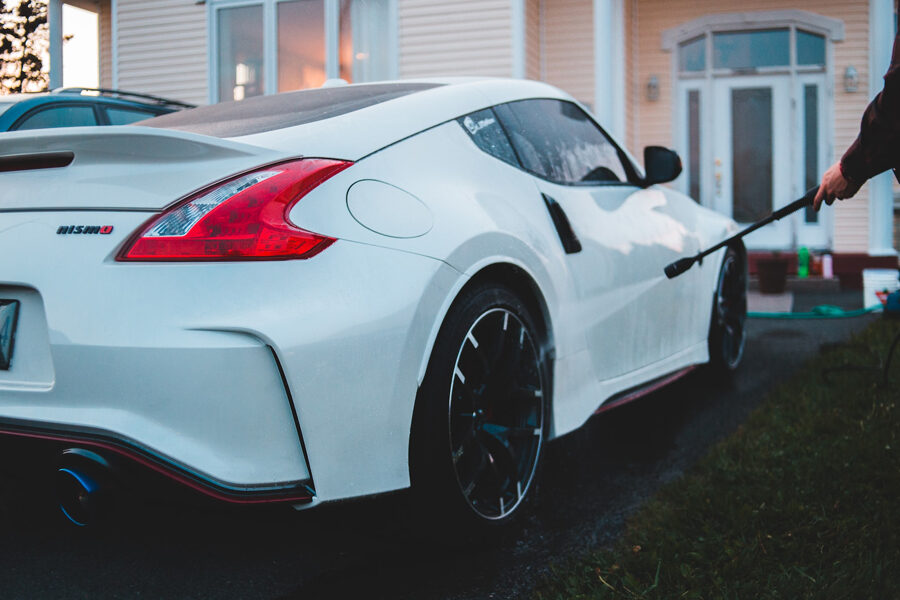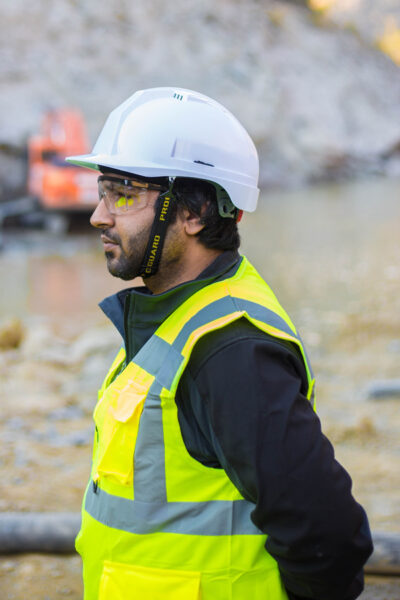
Carbon monoxide is a colorless, odorless gas. The burning of fossil fuels like natural gas, propane, oil, and wood creates carbon monoxide. When inhaled, it can cause a wide range of symptoms, from headaches and dizziness to nausea and fatigue. In high concentrations, it can be fatal. Carbon monoxide is particularly dangerous because it is difficult to detect without a specialized detector. In this article, we will discuss the importance of having carbon monoxide detectors, how they work, the different types available, proper installation and maintenance, and legal requirements and lot more. With the right knowledge and tools, you can ensure a safe and healthy living environment for yourself and your family.
The Impact of Carbon Monoxide On Vulnerable Populations
Carbon monoxide can have a particularly severe impact on vulnerable populations. These include infants, the elderly, and people with certain medical conditions.
Infants: Infants are particularly susceptible to the effects of carbon monoxide exposure. Infants are more susceptible to the effects of carbon monoxide because their lungs are not fully developed, and they breathe faster than adults. Exposure to carbon monoxide can cause brain damage, developmental delays, and even death in infants.
Elderly: The elderly are also at a higher risk of carbon monoxide exposure. This is because they may have a decreased ability to detect the symptoms of carbon monoxide poisoning. Moreover, they may have underlying medical conditions that make them more susceptible to the effects of the gas.
People with medical conditions: People with certain medical conditions, such as heart disease, anemia, and respiratory problems, are also at a higher risk of carbon monoxide exposure. This is because they may have a decreased ability to detect the symptoms of carbon monoxide poisoning. And also may have underlying medical conditions that make them more susceptible to the effects of the gas.
CO exposure can also lead to symptoms such as headaches, dizziness, nausea, and fatigue, which can be mistaken for other illnesses. This can make it harder for vulnerable populations to identify the cause of their symptoms, which can delay treatment and increase the risk of severe health effects.
How to Prevent Carbon Monoxide Buildup in Home
Here are some of the steps that you can help to prevent carbon monoxide buildup in your home and keep yourself and your family safe from the dangers of carbon monoxide exposure.
Regularly maintain appliances and heating systems
Have your appliances, such as your furnace, boiler, and gas stove, inspected and serviced regularly by a licensed professional to ensure that they are operating safely and efficiently.
Properly vent appliances and heating systems
Make sure that all appliances and heating systems are properly vented to the outside. In addition, make sure that the vents are not blocked or obstructed.
Do not use gas-powered appliances in enclosed spaces
Do not use gas-powered appliances, such as grills, portable generators, or camp stoves, in enclosed spaces, such as garages or basements. This is because they can produce dangerous levels of carbon monoxide.
Do not idle your car in an attached garage
Do not leave your car idling in an attached garage, as the exhaust fumes can seep into your home and cause carbon monoxide buildup.
Don’t cover up vents and chimneys
Make sure that vents and chimneys are not blocked or covered up, as this can prevent the proper ventilation of carbon monoxide.
Use CO detectors
Install carbon monoxide detectors in your home and make sure that they are functioning properly.
Keep appliances and heating systems in good condition
Maintain your appliances and heating systems by keeping them in good working order. Make sure to replace any worn or broken parts, and upgrading to newer, more efficient models as needed.
Keep a window slightly open in the room where you are using a gas appliance
Make sure that there is proper ventilation in the room where you are using a gas appliance by keeping a window slightly open to allow for fresh air circulation.
The Importance of Having a Carbon Monoxide Detector
Having a carbon monoxide detector in your home is important. This is because it can alert you to the presence of the gas before it reaches dangerous levels. This can give you and your family time to evacuate the house and seek medical attention if needed. Carbon monoxide detectors are relatively inexpensive and easy to install, making them a worthwhile investment for any homeowner.
Some of the symptoms of carbon monoxide poisoning include headache, dizziness, nausea, vomiting, confusion and fatigue. In severe cases, it can lead to unconsciousness and death. It is particularly dangerous to people who are sleeping or who have a medical condition that impairs their ability to detect the symptoms of carbon monoxide poisoning.
How Carbon Monoxide Detectors Work and The Different Types Available
Carbon monoxide detectors work by detecting the presence of carbon monoxide gas in the air. There are several different types of carbon monoxide detectors available, each with its own method of detecting the gas.
Battery-operated detectors use a sensor that detects the presence of carbon monoxide. And they sound an alarm when the gas is detected. These detectors are easy to install and do not require a power source other than batteries. They are portable, so you can place them anywhere in your home.
Hardwired detectors are connected to your home’s electrical system. They can be connected to other devices, such as a security system. They also use a sensor to detect carbon monoxide and sound an alarm when the gas is present. These detectors are more expensive than battery-operated detectors and require professional installation.
Combination smoke/carbon monoxide detectors are detectors that detect both smoke and carbon monoxide. They use a sensor that detects both smoke particles and CO gas and sounds an alarm when either is present. These are a great option for those who want protection from both fire and CO.
All carbon monoxide detectors use an electrochemical sensor, which is sensitive to carbon monoxide gas. These sensors pass an electric current through a chamber containing a porous electrode and an electrolyte. When CO gas is present, it reacts with the electrolyte and causes a change in the current. As a result, it triggers the alarm.
Each of these types uses a sensor to detect the presence of CO gas and sound an alarm when it is present.
Proper Installation and Maintenance of Carbon Monoxide Detectors
Proper installation and maintenance of carbon monoxide detectors is crucial. This will ensure that they are able to detect and alert you to the presence of carbon monoxide gas in your home.
When installing a carbon monoxide detector, it is advisable to place it on every level of your home. Such as the basement, and outside of each sleeping area. You should mount them on the wall or ceiling, at least 4 to 5 feet from the floor and away from any vents, windows, or doors to the outside. Avoid placing them near the kitchen or bathroom, as these areas may contain natural CO from appliances such as gas stoves or boilers.
It’s important to verify compatibility of the detector with your home’s electrical system and that it is correctly connected to a power source. To ensure proper installation, a professional electrician should handle the connection of hardwired detectors to your home’s electrical system.
Once installed, it is important to test the detector regularly to make sure that it is working properly. You should also check the batteries and replace them if necessary.
Most carbon monoxide detectors have a lifespan of around 5 to 7 years. After that period, you must make sure to replace them. Some detectors may have an expiration date or “end of life” indicator. This will inform you when it is time to replace the detector. It is also a good idea to replace the detector if it has been exposed to water or if it has been triggered multiple times as this may indicate that the sensor is no longer working properly.
Common Legal Requirements for Carbon Monoxide Detectors Include
It’s important to note that laws and regulations regarding CO detectors are subject to change, and vary from state to state and even from municipality to municipality. It’s always a good idea to check with your local authorities to know the legal requirements in your area and stay updated. But here are some common legal requirements:
Installation in residential dwelling units
Many states and municipalities require carbon monoxide detectors to be installed in all types of residential dwelling units, including single-family homes, apartments, and condos.
Placement near sleeping areas
In many states and municipalities, it’s mandatory to have carbon monoxide detectors placed outside of sleeping areas such as bedrooms or hallways near bedrooms to ensure the safety of the occupants.
Installation in commercial buildings
In certain states and municipalities, it is mandatory for commercial buildings such as hotels, motels, and dormitories to install carbon monoxide detectors as part of their safety measures.
Compliance with standards and codes
Many states and municipalities require carbon monoxide detectors to comply with specific standards and codes. These include the National Fire Protection Association (NFPA) or the International Residential Code (IRC).
Regular testing and maintenance
Regular maintenance, such as checking the batteries and replacing the detectors after a certain period of time, is mandatory in certain states and municipalities to ensure the proper functioning of carbon monoxide detectors.
A combination of smoke and CO detectors
Some states and municipalities require that carbon monoxide detectors be a combination of smoke and CO detectors, to provide protection from both fire and CO.
Signs of Carbon Monoxide Exposure and What to Do in Case of A Carbon Monoxide Emergency
The signs of carbon monoxide exposure can vary depending on the concentration of the gas and the length of exposure. Some of the most common symptoms include headache, dizziness, nausea, vomiting, confusion and fatigue. At higher concentrations, carbon monoxide exposure can cause chest pain, shortness of breath, and even loss of consciousness and death.
If you suspect that you or someone in your home is experiencing symptoms of carbon monoxide exposure, it is important to take immediate action to protect yourself and your family. The first step is to evacuate the house and get to fresh air as soon as possible.
After you have evacuated the house, you should call emergency services and inform them of the situation. Once you are out of the house, make sure to turn off all potential sources of CO. Such as appliances and heating systems, to prevent further exposure.
If you suspect carbon monoxide exposure, it is crucial to seek medical attention as soon as possible for yourself or anyone in your household. Even low-level exposure can cause health problems, and high levels of exposure can be fatal.
If you hear your carbon monoxide detector alarm, you should also evacuate your home immediately and call emergency services.
Kidde Carbon Monoxide Detector
The Kidde Carbon Monoxide Detector is a highly advanced and reliable carbon monoxide detector. It can help protect your home and family from the dangers of carbon monoxide exposure. This model, KN-COB-DP2, is designed to plug directly into any standard AC wall outlet. Moreover, 2-AA batteries provide reliable backup detection in the event of a power outage.
One of the key features of this carbon monoxide detector is its loud 85dB warning signal. It indicates dangerous levels of carbon monoxide in your home. This ensures that you and your family are alerted to the presence of CO in a timely manner. This happens even when you may not be able to see or smell it.
The detector also features a Replacement Alert. It chirps 2 times every 30 seconds to indicate that it’s time to replace the detector. To guarantee their accuracy and reliability, carbon monoxide detectors require replacement every 10 years, this serves as a helpful reminder.
The installation process is easy and quick. It plugs into any standard AC wall outlet, which means that you can have it set up and working in no time. It also offers a compact design, so you can plug it into a standard wall outlet without blocking the second outlet.
For whole-home protection, it is advisable to place one carbon monoxide detector on each level of your home and outside each sleeping area. This will ensure that you are safe from carbon monoxide exposure in all areas of your home.
The Kidde Carbon Monoxide Detector comes with a 10-year limited warranty. This means you can have peace of mind knowing that you and your family are safe against dangerous levels of carbon monoxide.
Conclusion
In conclusion, carbon monoxide is a silent killer that can cause serious health problems or even death if not detected in time. Having a carbon monoxide detector in your home is a vital step in protecting yourself and your loved ones from this dangerous gas.
Just as you ensure the safety of yourself and your loved ones by having a CO detector at home, you can also explore other modern technologies such as smart locks, smart lighting, smart security cameras, smart humidifiers, smart doorbells, smart thermostats etc that can help to make your home both safe and smart with our guidance.




